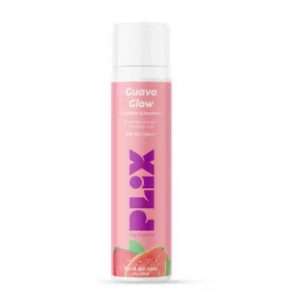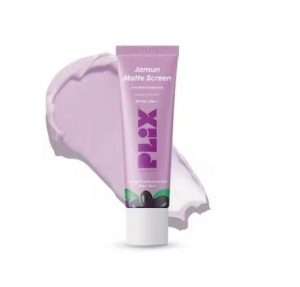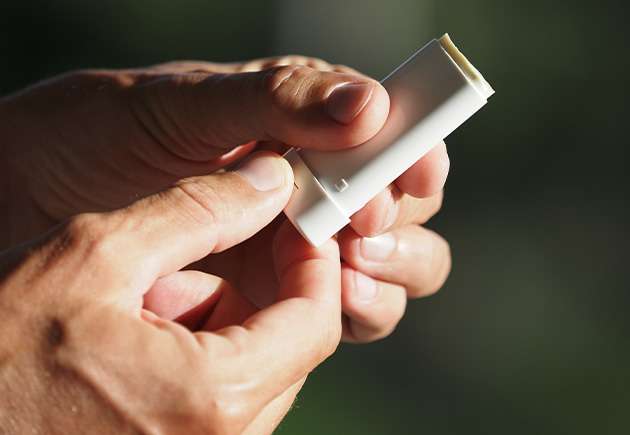How to Protect Your Skin from Sun Damage?

A radiant summer day, a gentle breeze in the air, and the sun’s warm caress on your skin. It’s a scene straight out of a feel-good movie, one that lifts your spirits and invites you to bask in the great outdoors. But beneath this idyllic picture lies a tale of caution—a story of sun damage, an adversary that often lurks in the shadows of those picturesque moments.
The sun, that magnificent celestial body, offers us much more than meets the eye. Beyond its luminous glow and mood-enhancing rays, it holds a potent force that can affect our skin in ways we might not fully grasp. As we dive into this comprehensive guide, we will journey into the heart of sun protection, exploring the reasons why safeguarding your skin from the sun is a matter of utmost importance.
But this isn’t just a tale of caution; it’s a roadmap to help you navigate the sunny terrain wisely. By the time we conclude this journey, you’ll be well-equipped to shield your skin from the sun’s potent embrace effectively. So, let’s ensure that your skin remains a testament to health, radiance, and resilience, even in the face of the sun’s brilliance.
Related Product – dewy sunscreen
Related Product – Sun Prepped Skin
Why Sun Damage Is a Serious Concern?
Ah, that golden tan—the stuff of beach dreams and Instagram photos, right? But hold on a minute; let’s talk about what’s happening beneath the surface when the sun kisses your skin.
1 – Premature Aging
Do you know those fine lines, wrinkles, and age spots that we usually associate with getting older? Well, the sun has a way of fast-tracking that process. Its UV rays are like little time machines that break down collagen and elastin in your skin, which are like the building blocks that keep it firm and stretchy. So, too much sun can lead to skin that ages faster than it should.
2 – Skin Cancer
Now, here’s the serious part. Spending too much time in the sun, especially without protection, can up your chances of getting skin cancer. Melanoma, the most dangerous kind of skin cancer, is a real threat when you’ve had too much sun exposure. It’s a bit like playing with fire, and it’s something you definitely want to avoid. If you notice unusual changes in your skin, like new moles or spots, it’s important to see a doctor right away.
3 – Sunburn
Sunburn isn’t just a temporary discomfort. It showcases your sun damaged skin. And if you keep getting sunburned, especially throughout your life, it can lead to more serious problems down the road, like skin cancer. So, while that lobster look might be a temporary inconvenience, it’s a big deal in the grand scheme of skin health.
Related Article – Explore The Key Benefits Of Sunscreen
Understanding the Harmful Effects of UV Rays
Alright, let’s talk about UV rays & what UV rays causes—those sneaky rays from the sun that can have a real impact on your skin. There are two main types you need to know about: UVA and UVB.
1 – UVA Rays: The Aging Agents
UVA rays are the culprits behind premature aging. These rays are like stealthy ninjas that sneak deep into your skin, causing all sorts of long-term mischief. We’re talking wrinkles, fine lines, and age spots—the unwelcome guests at the skin’s party. They’re the reason why your skin can look older than it should.
What’s tricky about UVA rays is that they’re around all year long, even when it’s cloudy or you’re sitting behind a window. So, they’re a bit like the timeless troublemakers, always lurking in the background.
2 – UVB Rays: The Burners
Now, let’s meet UVB rays—the ones responsible for sunburn. They’re like the hot-headed characters of the UV world, most intense when the sun is at its peak, around midday, and during the sunny summer months.
UVB rays not only turn your skin into a lobster if you’re not careful but also play a role in the development of skin cancer. They’re a bit like the double trouble duo—sunburn and cancer risk rolled into one.
So, why the UV-ray lesson? Because understanding these sunbeams is your first line of defense. Armed with this knowledge, you can take smart steps to protect your skin and keep it looking youthful and healthy. And speaking of protection, that’s where sunscreen and sunblock come into play!
How to Choose the Right Sunscreen for Your Skin Type?
Now that you know why sunscreen is your trusty shield against UV rays, let’s dive into how to pick the perfect one for your unique skin and how to apply sunscreen. Think of it as finding the right armor for battle—a crucial step in your sun protection strategy. Here’s your personalized guide:
1 – SPF (Sun Protection Factor)
Start with the basics: SPF! Look for SPF 50 sunscreen. It’s like having a powerful ally guarding you against UVB rays, the ones responsible for sunburn. If you’re planning on spending more time outdoors, consider higher SPF with PA+++ Sunscreen. It’s like adding extra layers of armor to your defense.
2. Broad Spectrum

Next up, make sure your sunscreen is labeled as “broad-spectrum.” This means it’s got your back against both UVA and UVB rays—the dynamic duo of sun damage. Think of it as a well-rounded protector, shielding you from all sides. You can introduce our Guava Glow Invisible Dewy Sunscreen with SPF50+ PA+++ in your skincare routine as it provides a broad-spectrum SPF 50 shield against UVA, UVB & blue light. You can stay trendy and protect your skin from the sun’s harmful rays by trying out Sunscreen Stick SPF 50 PA +++
3. Skin Type
Your skin type is your secret weapon in this sunscreen mission:
Sensitive Skin: If your skin’s a bit of a diva, look for sunscreen labeled as “hypoallergenic.” It’s like choosing the gentlest shield, one that won’t upset your skin’s delicate disposition.
Oily Skin: If your skin tends to get a bit greasy, consider a mattifying sunscreen or oil-free sunscreen for face. It’s like picking armor that won’t weigh you down in the battle against UV rays.
Dry Skin: If your skin’s more parched than a desert, opt a sunscreen for glowing skin with added moisturizers. Think of it as a hydrating shield, keeping your skin comfortable and protected.
4. Water Resistance
Planning on some aquatic adventures or a sweat-inducing workout? Choose a water-resistant sunscreen. It’s like having a shield that doesn’t easily wash away, ensuring your protection stays intact.
5. Active Ingredients

Lastly, pay attention to the active ingredients. Look for sunscreens with zinc oxide or titanium dioxide—they provide physical protection by creating a barrier on your skin’s surface, bouncing those pesky UV rays right back into the atmosphere. It’s like having a reflective shield, sending UV rays packing. Our Jamun Mattifying Lightweight Sunscreen With SPA50+ PA+++ is a blend of active ingredients and fruit extract which helps in reducing active acne & soothes inflammation with regular use. It is a 3-in-1 active formula of Salicylic acid, Zinc Oxide, and sunCat DE.
With these guidelines, you’re well-equipped to select the ideal sunscreen that suits your skin type and lifestyle. And now that you’ve mastered the art of sunscreen selection, you’re ready to face the sun with confidence and grace.
Related Article – Explore The Key Benefits Of Sunscreen
How to Repair Sun-Damaged Skin?
So, let’s say you’ve had some run-ins with the sun, and your skin is showing the battle scars of sun damage. Don’t worry; all is not lost. You can take steps to heal and rejuvenate your skin, just like a warrior who tends to their wounds after a tough battle. Here’s your strategy:
-
Moisturize – The Hydration Hero
Invest in a top-notch moisturizer, one that’s packed with hydrating ingredients like hyaluronic acid. Think of it as a soothing balm that quenches your skin’s thirst. Hydration helps plump up your skin, making those fine lines and wrinkles less noticeable. It’s like giving your skin a refreshing drink.
-
Exfoliate – The Renewal Ritual
Gently exfoliate your skin to slough away those dead cells. It’s like sweeping away the debris of battle to reveal the fresh, healthy skin underneath. But remember, gentle is the keyword here. Over-exfoliating can do more harm than good, so be kind to your skin.
-
Antioxidants – The Skin Saviors
Now, it’s time to bring in the big guns—antioxidants. Look for products with ingredients like vitamins C and E. These are like the knights in shining armor, protecting your skin from further damage while helping it repair. Antioxidants can fade those pesky sunspots and give your skin a more even tone.
-
Consult a Dermatologist – The Wise Counsel
If your sun damage seems especially stubborn or if you notice any unusual changes in your skin, don’t hesitate to seek advice from a dermatologist. They’re like the trusted advisors in your skin care quest. They can provide personalized recommendations and treatments tailored to your skin’s unique needs, ensuring you get the best care possible.
So, there you have it—your battle plan to repair and rejuvenate sun-damaged skin. With the right allies in your skincare arsenal, you can nurse your skin back to health and stride confidently toward healthier, more radiant days ahead. You can also prep up your skin by trying our Sun Prepped Skin as it helps give you youthful-looking skin by improving skin elasticity and reducing wrinkles and fine lines. It also enhances your skin health with our antioxidant-charged formula that maintains skin hydration and nourishes your skin.
Related Article – Facts You Need to Know About Sunscreen Tablets
Conclusion
Sun damage is a serious concern that affects us all, but armed with the right knowledge and tools, you can protect your skin effectively. Remember to choose a broad-spectrum sunscreen with an appropriate SPF, seek shade, wear protective clothing, and stay hydrated when enjoying the outdoors.
By understanding the harmful effects of UV rays, choosing the right Sunblock Tablets or sunscreen for your skin type, and adopting good sun protection habits, you can reduce the risk of premature aging and skin cancer. And if you’ve already experienced sun damage, don’t worry—there are steps you can take to repair and rejuvenate your skin, ensuring a healthier and more radiant complexion for the years to come.
FAQs
-
What is sun damage?
Sun damage refers to the harm inflicted on your skin due to prolonged exposure to the sun’s ultraviolet (UV) rays. It includes a range of issues such as sunburn, premature aging (wrinkles, fine lines, age spots), and an increased risk of skin cancer. Sun damage occurs when UV rays penetrate the skin, causing various forms of damage, both immediate and long-term.
-
Can sun damage be repaired?
Yes, sun damage can be repaired to some extent. While you can’t completely reverse all the effects of sun damage, you can take steps to improve your skin’s condition. This includes moisturizing to hydrate the skin, exfoliating to remove damaged cells, and using products with antioxidants like vitamins C and E to help repair and protect the skin. Consultation with a dermatologist can provide more advanced treatment options for severe sun damage.
-
What are the signs of sun damage?
Signs of sun damage on the skin encompass premature aging, including fine lines, wrinkles, and age spots, as well as sunburn, characterized by redness and pain. Changes in skin texture, such as roughness or a leathery feel, can also develop. Uneven skin tone with dark spots and increased skin sensitivity to environmental factors are additional indicators of sun damage.
-
Can sunscreen reverse sun damage?
Sunscreen cannot reverse existing sun damage, but it can prevent further damage when used correctly. Sunscreen acts as a protective barrier, shielding the skin from the harmful effects of UV rays. By applying sunscreen daily, you can minimize the risk of additional sun damage and maintain healthier skin.
-
How do you control sun damage?
Controlling sun damage involves regular use of sunscreen, seeking shade during peak sun hours, staying hydrated, and choosing the right sunscreen for your skin type to prevent further damage. If sun damage has already occurred, repair efforts include moisturizing, gentle exfoliation, using antioxidants like vitamins C and E, and consulting a dermatologist for personalized treatment options.














